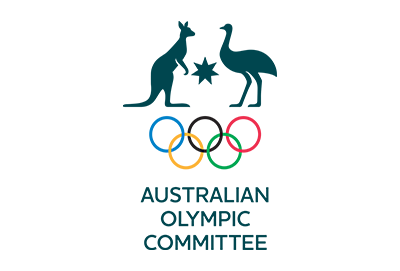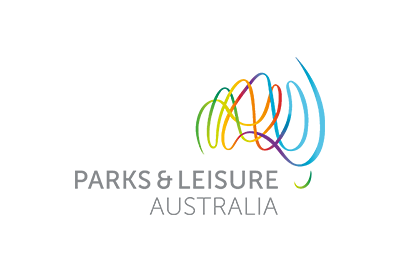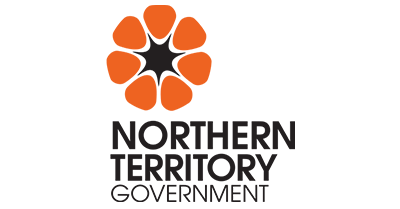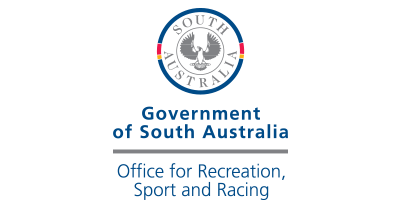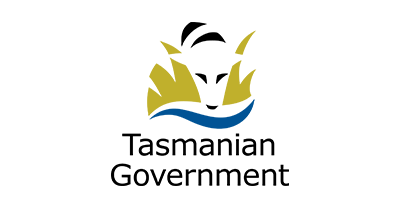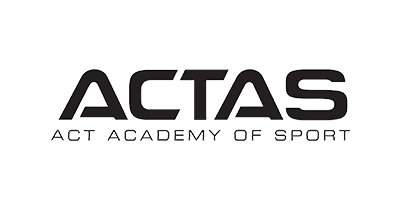Socio-economic
Socio-economic status can impact how people engage with sport (e.g. types of activities participated in, frequency of participation).
Individuals experiencing socio-economic disadvantage – whether a low- education level, income, status occupation, or living in a socioeconomically disadvantaged area – are generally less likely than more advantaged segments of the population to engage in sport or physical activity. This may be because of cost, including time required and/or financial resources to pay for activities or the equipment required to participate (e.g. shoes, uniforms, fees), and less access to suitable facilities or programs.
AusPlay survey results in 2024, indicate that individuals from households with annual income of less than AU$40,000 have the lowest participation levels for both adults and children. Participation rates generally continue to rise in line with income. [Note: As is common in population surveys, a large proportion of respondents did not provide or did not know their household income.] 36
Additionally, those aged 15 years and over who are employed (full, part-time, or casual) are more likely to be physically active than those who are unemployed or engaged in home duties. Individuals who have completed high school or tertiary education are also more likely to be active than people who did not complete the highest level of school (e.g. year 12). 36
Resources and reading
- Our work to help people from deprived areas to get physically active, opens in a new tab, Sport England, (31 October 2019). Earlier this month we updated you on how the 35 projects to receive funding from our Tackling Inactivity and Economic Disadvantage have been getting on. In their first year they have engaged almost 5,000 people from lower socio-economic groups. Here we’re going to take a closer look at the impact some of these projects, as well as those working with similar groups of people but not receiving TIED funding, are having.
- Active Citizens Worldwide: annual report 2019, opens in a new tab, Active Citizens Worldwide, (2019). Now in the second year ACW works to provide compelling evidence from participating cities (Auckland, London, Singapore, Stockholm) to shed light on the value of sport and physical activity (economic, health, social) and the complex systemic interplay between socio-economics, demographics, policy, and sport/physical activity participation. Some highlights of the report include: Physically active individuals are: 6% happier; 28% more trusting of community: have 6% higher life satisfaction; and, 14% less psychologically distressed. Sport can also lead to more time spent with others. For every hour spend doing sport, 48 minutes are spent with other people; for non-sport exercise 1 hour=23 minutes spent with others. The report also highlights that well-off individuals are up to 1.7 times more likely to be active than those less well-off and the participation gap between men and women remains pronounced in all participating cities.
- AusPlay data portal: Sport-related participation - Frequency of participation, opens in a new tab, Australian Sports Commission, (accessed 8 July 2025). Updated twice annually this report provides representative survey data on the estimated number of participants and participation rates for different population groups.
- Sports and Health in America, opens in a new tab, Robert Wood Johnson Foundation and Harvard T.H. Chan School of Public Health, (2015). In the United States of America there is a sharp decline in sports participation among adults as they age. This report looks at age, gender and income in relation to adult sport participation.
- Lower-income adults are less than half as likely to play sports as higher-income adults. Sports participation among adults varies by income, where only 15% of lower-income adults play sports (those with household incomes less than $25,000/year), while 37% of higher-income adults play sports (those with household incomes of at least $75,000/year).
- There is also an education gap in sports participation, as adults with less education (graduated high school or less) are much less likely to say they play sports (15%) compared to adults with some college (29%) or college graduates (35%).
- Parents who are less well-off are twice as likely to report problems with the costs of their child’s sports compared to parents who are more well-off. When parents whose child plays sports were asked about problems that make it difficult for their child to continue participating, about one in three parents (32%) who are less well-off (household incomes less than $50,000/year) say that sports cost too much, while just one in six parents (16%) who are more well-off (household incomes $50,000/year or more) say that sports cost too much.
- Adults who exercise are more likely to have higher incomes, more education, and tend to be younger than adults who do not exercise. Lower-income adults are less likely to exercise regularly than higher-income adults: 40% of lower-income adults (those with household incomes less than $25,000/year) say they exercise on a regular basis, while 64% of higherincome adults (those with household incomes of at least $75,000/year) say they exercise on a regular basis.
- Fair play? Participation equity in organised sport and physical activity among children and adolescents in high income countries: a systematic review and meta-analysis, opens in a new tab, Katherine Owen, Tracy Nau, Lindsey Reece, et al., International Journal of Behavioral Nutrition and Physical Activity, Volume 19, article 27, (March 2022). From the 104 eligible studies, we meta-analysed 163 effect sizes. Overall, children and adolescents living in higher socioeconomic status households were more likely to participate in sport and participated for a longer duration. The socioeconomic disparity in the duration of sport participation was greater in children compared with adolescents. Overall, children and adolescents living in higher socioeconomic status households were more likely to meet physical activity guidelines and participated for a longer duration. The socioeconomic disparity in the duration of total physical activity between low and high socioeconomic status households was greater in children compared with adolescents. There was no significant disparity in leisure time physical activity. These findings highlight the need importance of targeting sport programs according to socio-economic gradients, to reduce inequities in access and opportunity to organised sport.
- Overcoming disparities in organized physical activity: findings from Australian community strategies, opens in a new tab, Smith B, Thomas M and Batras D, Health Promotion International, Volume 31(3), pp.572-581, (September 2016). This article examines the barriers to participation in sport and strategies used to overcome these barriers among disadvantaged groups. Sporting organisations received community funding from VicHealth’s Participation in Community Sport and Recreation Program (PICSAR) to adopt strategies allowing them to include more people from Indigenous, low socioeconomic and culturally and linguistically diverse (CALD) backgrounds, as well as persons with disabilities into their programs. Disadvantaged groups typically have lower levels of physical activity and poorer health outcomes compared to the overall population. Several barriers to participation were identified – high costs, lack of transport to activities, cultural differences, unwelcoming sporting environments at clubs, and lack of suitable facilities for people with disabilities. A number of successful strategies were put in place to overcome these barriers; including: employing staff from the priority groups; building communication and partnerships over time with community organisations; specific training for staff and volunteers; and modifying traditional activities to better suit participants. Various strategies were also put in place to reduce cost and provide transport. Although cost and transport strategies demonstrated some success, they were not sustainable. Overall, organisations found it took longer than initially expected to successfully engage target populations, but that this was a necessary and valuable process.
- Traversing myths and mountains: addressing socioeconomic inequities in the promotion of nutrition and physical activity behaviours, opens in a new tab, Ball K, International Journal of Behavioral Nutrition and Physical Activity, Volume 12, article 142, (November 2015). Socioeconomic inequities are linked to both decreased participation in health promoting physical activity and greater sedentary behaviours. The impacts of socioeconomic disadvantage are evident across multiple populations and studies. This is a concern because socioeconomic inequities also impact upon the rate of obesity and many health outcomes. Yet there remains a dearth of evidence of the most effective means of addressing these inequities. People who experience disadvantage face multiple challenges to maintaining healthy behaviours, including participation in organised and social sport and health promoting physical activity. This paper addresses some on the challenges facing behavioural scientists.
- Childhood socioeconomic position and adult leisure-time physical activity: a systematic review, opens in a new tab, Elharkeem A, Cooper R, Bann D, et al., International Journal of Behavioral Nutrition and Physical Activity, Volume 12, article 92, (July 2015). Evidence suggests that childhood socioeconomic circumstances can impact on adult long-term physical activity (LTPA). This review tested the hypothesis that a lower childhood socioeconomic position (SEP) is associated with less frequent LTPA during adulthood. A systematic review of literature was conducted from English language based publications; 45 papers from 36 studies were included in the review, most were of European origin. This review found evidence of an association between less advantaged childhood SEP and less frequent LTPA during adulthood. Future research should focus on how associations vary by gender and country.
- Children’s participation in organized sport and physical activities and active free play: Exploring the impact of time, gender and neighbourhood household income using longitudinal data, opens in a new tab, Cairney J, Joshi D, Kwan M, et al., Sociology of Sport Journal, Volume 32(3), pp.266-283, (January 2015). This study examines the associations among socioeconomic status (SES), aging, gender and sport and physical activity participation from late childhood (age 9 years) into adolescence (13 years). Subjects were 1158 boys (50.8% of the sample) and 1120 girls (49.2%) grade 4 students from Southern Ontario, Canada, schools. This study found that household income was a significant predictor of participation in organised sport/activity; the lower the household income the less participation. The SES impact on participation in organised sport was consistent throughout the age range (i.e. 9 to 13 years) for both boys and girls. In addition, SES had an impact upon active free play by girls, but not for the boys in this study; high SES girls participated in more active play while lower SES girls spent less time in active play. This relationship was not seen among the boys’ active play. The authors speculate that SES and gender factors may interact: adolescent girls from low SES families may be involved in more domestic activities – leaving less time for discretionary physical activity, and environmental factors and safety concerns may impact more on girls than boys.
- Participation in physical activity and sport: Associations with socio-economic status and geographical location, opens in a new tab, Eime R, Harvey J, Charity M, et al., Sport and Recreation Spatial report, (2014). This research looked at the relationship between participation rates, frequency of participation, and participation specific contexts in relation to socio-economic status and remoteness of location. There were 95 different types of physical activity identified; the majority of these activities showed a statistically significant relationship between participation and socio-economic status. There were also some significant relationships among some activities between participation and remoteness.
Access to resources Where possible, direct links to full-text and online resources are provided. However, where links are not available, you may be able to access documents directly by searching our licenced full-text databases (note: user access restrictions apply). Alternatively, you can ask your institutional, university, or local library for assistance—or purchase documents directly from the publisher. You may also find the information you’re seeking by searching Google Scholar, opens in a new tab.


